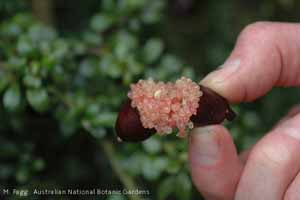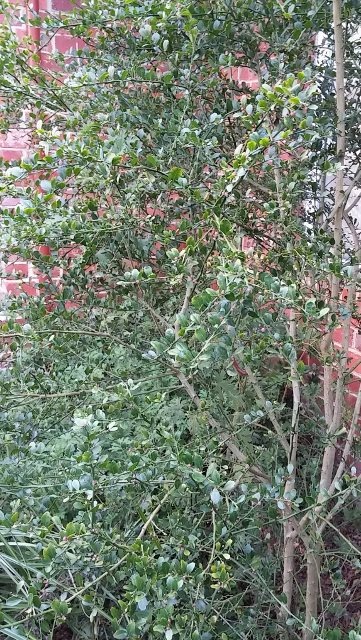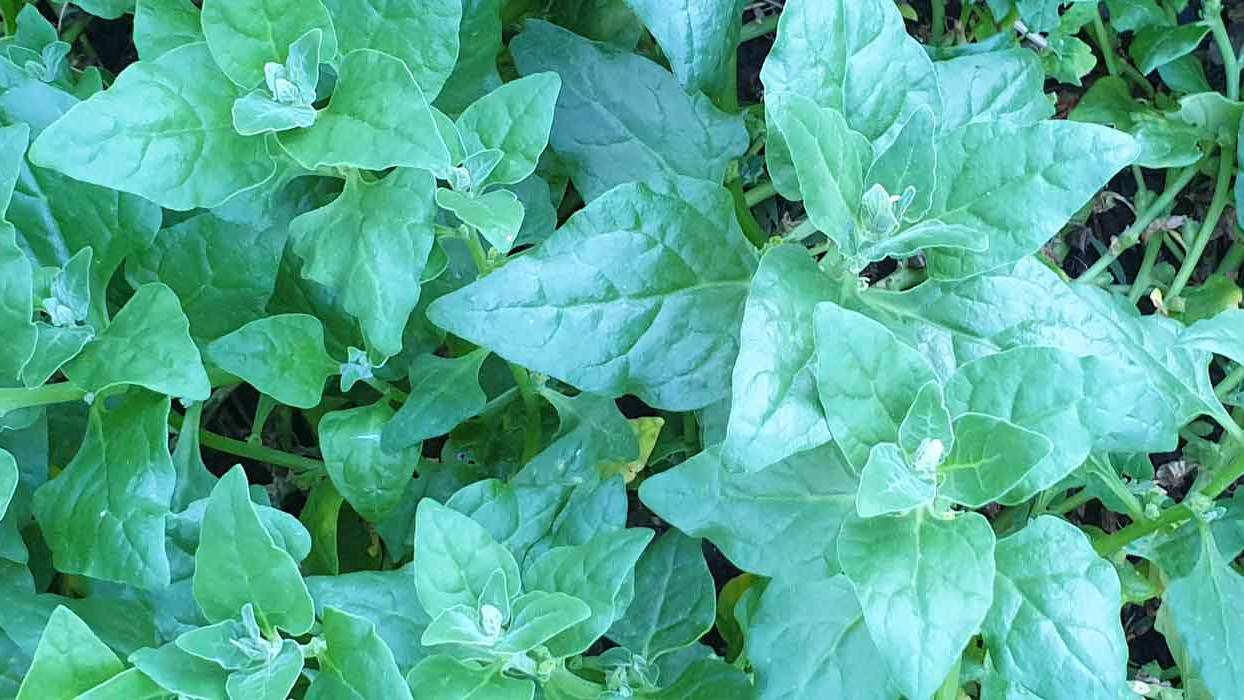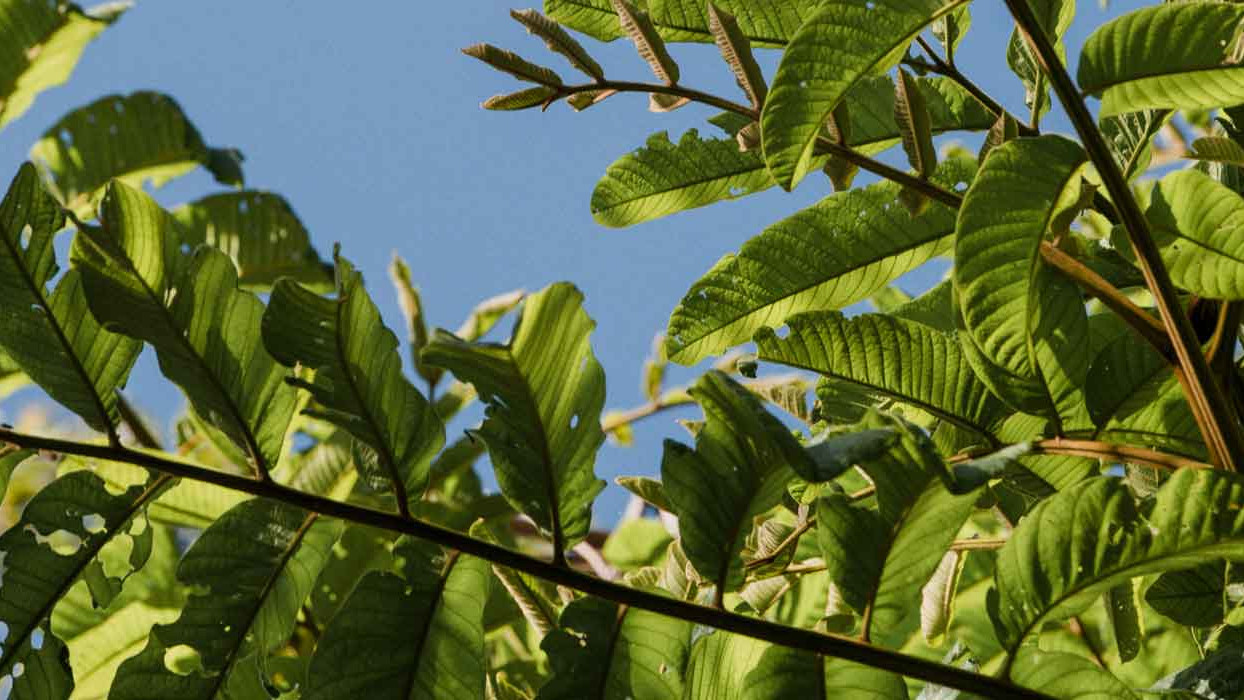 The fruit of the Australian finger lime Citrus australasica is sought after by top restaurants around the world. Often described as ‘lime caviar’ for its small bead-like crystals of tangy juice, this bushfood is used to pep up drinks, in desserts, as a garnish and even to make marmalade. For the home gardener, it is also an attractive tree, growing to six metres, and its thorns provide a perfect habitat for small birds. It is native to the rainforests of south-east Queensland and north-east New South Wales, but will grow elsewhere.
The fruit of the Australian finger lime Citrus australasica is sought after by top restaurants around the world. Often described as ‘lime caviar’ for its small bead-like crystals of tangy juice, this bushfood is used to pep up drinks, in desserts, as a garnish and even to make marmalade. For the home gardener, it is also an attractive tree, growing to six metres, and its thorns provide a perfect habitat for small birds. It is native to the rainforests of south-east Queensland and north-east New South Wales, but will grow elsewhere.
Planting schedule for warm, temperate and cool areas of Australia
Anytime except the height of summer when it can be too hard to make sure they get enough water.
Position
 It is a good idea to protect trees from prevailing winds as the fruit can be damaged by the plant’s thorns. Finger limes thrive in dappled light as well as full sun. In cooler climates, a partly shaded north-facing site is preferred. They are able to withstand light frost.
It is a good idea to protect trees from prevailing winds as the fruit can be damaged by the plant’s thorns. Finger limes thrive in dappled light as well as full sun. In cooler climates, a partly shaded north-facing site is preferred. They are able to withstand light frost.
Finger limes, along with other citrus, make good hedges and espalier well against fences and walls.
Soil and fertiliser
They grow in a wide range of soils in tropical and subtropical rainforest. They are most commonly grafted onto exotic citrus with Citrus trifoliata being the most common and they are then particularly suitable for heavier soils. Grafted finger limes grow faster and withstand other climatic conditions because the grafted wood is usually taken from a mature tree. Like all citrus, finger limes prefer well-drained soil with a pH of between 6 and 7.
Mulch in spring and make sure the soil is kept moist in summer.
They require small amounts of fertiliser every 2 – 3 months. It is best to also give small quantities of soil conditioners like seaweed emulsion or worm castings regularly e.g. every 2 weeks.
Flowers and fruiting
The flowers are 10 to 14mm in diameter, white or pale pink and appear in late summer and autumn. They are followed by elongated fruits about 30-120mm long. The fruits ripen in winter through to spring and may be green, yellow, black, purple or red. The pulp is green, yellow or pink.
Propagation
Finger limes can be grown from seed, cuttings or grafting. They are slow growing and if grown from seed may take up to 15 years to mature. It is important to use fresh seeds. Semi-hardwood cuttings, like seedlings, are slow to grow and have a low success rate. Therefore, grafting on to Citrus trifoliata or a range of other citrus rootstock is preferable.
Pests and diseases
Citrus gall wasp Bruchophagus fellis is an Australian native insect pest. Citrus australasica is its natural host. The wasp has spread across the country in recent decades to areas of citrus production and to backyards. The wasp can reduce fruit size, tree vigour and yield.
The following practices can help limit the damage caused by citrus gall wasp: check your citrus trees between June and September when galls are at their most visible; prune off the infected branches by late August (before the adult wasps emerge); burn the infected branches. Do not put in the compost or green waste bin. Hang sticky yellow traps on the tree in mid-August as they attract and trap the emerging adults, but make sure you take the traps down by November as they also kill beneficial insects.
A biological form of control – introducing wasps that prey on citrus gall wasp – is used in orchards and home gardens. Megastigmus brevivalvus and Megastigmus trisulcus are natural enemies of citrus gall wasp. They lay their eggs inside the eggs of the citrus gall wasp and when their eggs hatch they destroy the host.
Megastigus brevivalvus is sold to home gardeners in some states, but it is only available for a two-week window around October/November. If you are able to get some of the parasitic wasps, they must be released soon after the citrus gall wasps have emerged.
Finger limes also suffer from similar pests and diseases to those of other citrus plants, such as crusader bug, spined citrus bug, bronze orange citrus bug, caterpillars, grasshoppers, psyllids, leaf miner, leaf hoppers, aphids, scale, nematodes and mealy bug. Sap-sucking insects can transmit both bacterial and viral diseases some of which can kill the plant.
Fungal diseases such as melanose, gummosis, phytophtera and dry fusarium rot may also be encountered.
Some ways to get rid of scale without using toxic sprays are: encourage predatory bugs into your garden (some predatory insects can be bought); rub off by hand; prune and dispose of infected branches, twigs and leaves; and apply horticultural oil (or home-made vegetable oil soap) which kills insects by smothering them.
Bronze orange bug can be removed by hand and drowned in a bucket of soapy water, but it is wise to wear gloves as they can squirt a nasty liquid. Spraying with eco-oil in winter and early spring may reduce numbers.
One of the non-chemical ways to deal with fungal disease like melanose is to prune off dead twigs and branches and remove diseased material from under the tree.
Cultivars
There are many cultivars of the Australian Finger Lime. They include: the ‘Rainforest Pearl’, a vigorous grower with pink fruit; and ‘Alstonville’ – a tall growing shrub producing dark green-black fruit with a pale green flesh. The ‘Blood Lime’ is a hybrid – a cross between a mandarin and a finger lime which boasts blood red flesh – the rind and juice may also be red.
Tastes vary. Some suggest trying the fruit before buying a tree to make sure you like the flavour. It is not always easy to find the fruit as demand exceeds supply. Try fruit markets in Sydney, Melbourne and Brisbane.
The trees can be bought at most nurseries.
We acknowledge the contributions of the indigenous food business Aussiecitrus to this article.
Recipes
Garlic & chilli prawns with pepperberry, saltbush & finger lime
A wonderful recipe for this unusual fruit can be found here http://heneedsfood.com/2013/12/garlic-chilli-prawns-with-pepperberry-saltbush-finger-lime/
References
Department of Primary Industry. NSW. www.dpi.nsw.gov.au/__data/assets/pdf_file/0016/320272/growing-australian-native-finger-limes.pdf
Australian Native Plants Society http://anpsa.org.au/
Australian National Botanic Gardens www.anbg.gov.au
Related Articles:
Warrigal Greens
Warrigal greens Tetragonia tetragonioides are an edible Australian native groundcover. This bushfood is a member of the family Aizoaceae and is…
Native Tamarind
Bushfood native tamarind Diploglottis australis, with its large velvety leaves, is an attractive rainforest tree that is valued for its prolific…




